Cider Pressing 2014–Longmont, CO

This September, I had the good fortune to attend a cider pressing hosted by two brothers in Longmont, CO, who have assembled their own, rather ingenious, cider pressing operation. Complete with all the gear and organization needed to efficiently press hundreds of gallons of juice, this non-commercial, friends-and-family cider event was a privilege to attend and something worth sharing–if indirectly–with you.
2015 Edit:
Unfortunately, the barn housing the cider equipment for this operation burned down in January 2015, dealing a heavy blow to both this community tradition and also to Steven, the barn’s owner, who is a machinist and whose machine tools were also lost in the fire. See here for more information about this, including the GoFundMe campaign we’ve started in order to help them rebuild.
Original Post:
Overview:
Having been previously notified via email mailing list, twenty or so people descended on a property near Longmont, CO to press something like 9000 pounds of apples acquired from around the region. This was a banner year for apples in Colorado–a very wet year following a year of virtually no yield (due to a late freeze that wiped out the blossoms and left the trees with fruiting energy to spare) resulted in overloaded branches and high yields on virtually every tree around. The group was largely self-organized, working at various stations as needed, keeping things moving, and having a great time doing it.
Stations Of The Crush:
Making cider is a process. Shocking to hear, I know, but there are multiple steps involved. Here’s how it worked.
Sorting:
The first order of business was to sort the apples, discarding the rotten or bug-eaten apples and moving the good ones along toward the next step: washing. The sorting table is also ostensibly one of the stages where you could set the relative proportion of apple varieties going into the blend, but in our case we had so many varieties stacked in large nursery pots that we mostly just kept a decent variety of colors and sizes rolling through at any given time. Many of the discarded apples ended up as animal feed.
Washing:
After sorting, the apples were rinsed before grinding. In this case, we used an old sugar beet washer once used by a sugar company in Longmont that closed long ago. It works great for apples, which come out of it quite clean and feed straight into an electric apple grinder that ran almost continuously, pulverizing the apples into buckets of pomace that were then prepared for pressing.
Grinding:
The washed apples were gravity fed directly into the grinder–consisting of a spinning cylinder with embedded blades, driven by an electric motor–which spat out a fine, juicy pomace into buckets that were then assembled for the press.
Press Prep:
Using wooden frames, the folks manning the prep station poured pomace into cloth, folded it into squares, and stacked these squares of cloth-wrapped pomace–each of these is called a ‘cheese’–between wooden platters. Periodically, a large stack of these then went on into the hydraulic press to be mercilessly crushed, with no quarter granted.
Pressing:
The apple press we used is quite impressive–a hydraulic piston once used for lifting the bed of an old dump truck, welded into a steel frame with an added collection vessel. This thing is extremely powerful–I don’t know what the pressures were, but I believe the yield was north of 3 gallons per bushel. Once pressed, the pomace–now quite dry–was removed from the cloths and gathered for composting, then the cloths and frames re-used for the next pressing.
Collection:
During pressing, the juice ran out from the pomace and into a collecting vessel. This collecting vessel was fitted to a pump (one of the peristaltic pumps used in the medical field) which continuously pumped juice into a large, refrigerated milk tank once used by the nearby agricultural college (CSU–a well known ag school), thus going from pressing to refrigerated storage very quickly.
Dispensing:
The last link in the chain was dispensing cider from spigots on the milk tank. Those in attendance took varying amounts of cider and left donations to help cover the cost of repairs and upkeep of the equipment. And you’ll never guess what I used the juice I took for (hint: it was mostly used for this).
Thoughts
The pressing experience was a lot of fun, and a reminder in this often disfunctional world that people–even strangers–can sometimes get together and accomplish something. Granted, this was a small thing in itself, but the experience was encouraging nonetheless and restored a bit of my faith in humanity. Plus, we got cider!
Further Reading
For more geekery around the cidermaking process and the equipment involved, check out the cider-making tutorial and cidery gear roundup post, as well as the Resources Page.
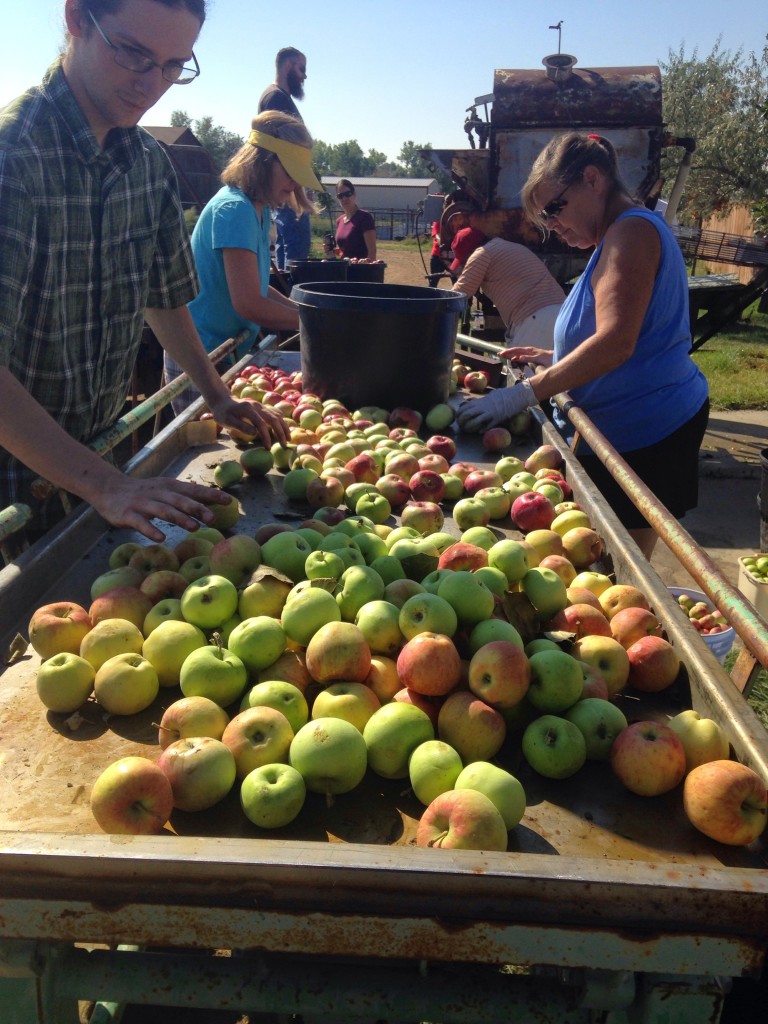
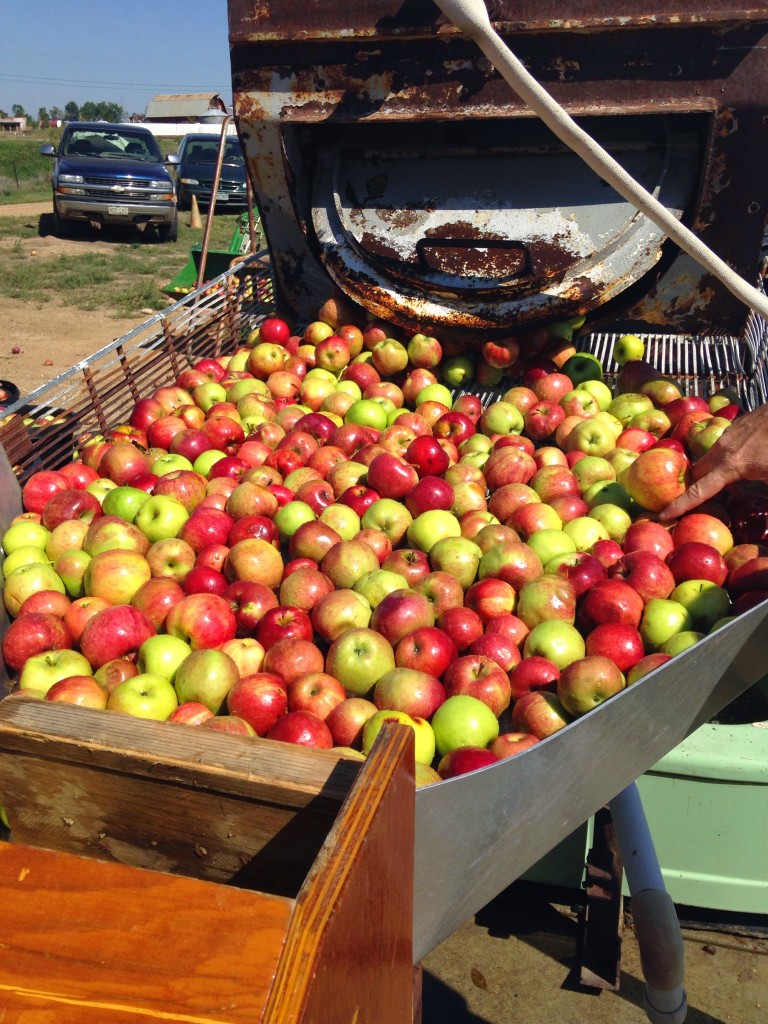

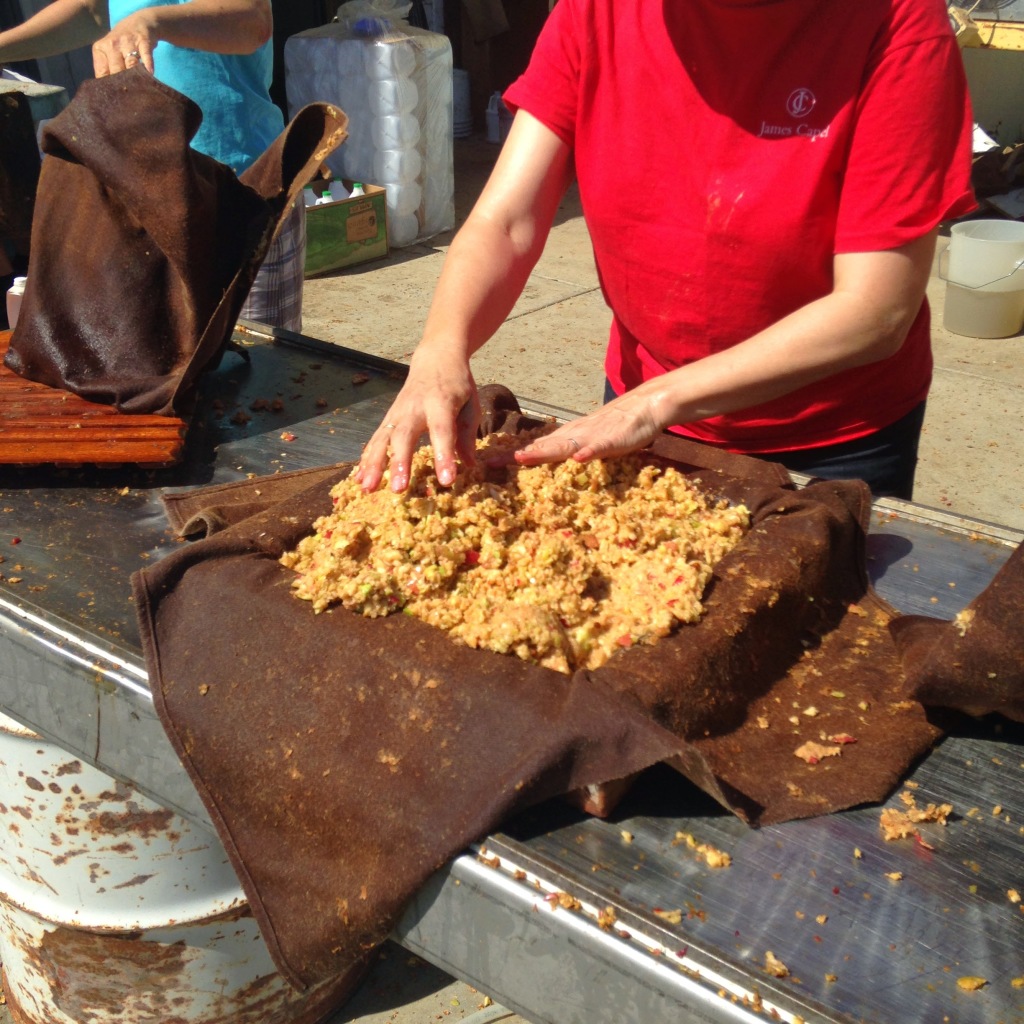
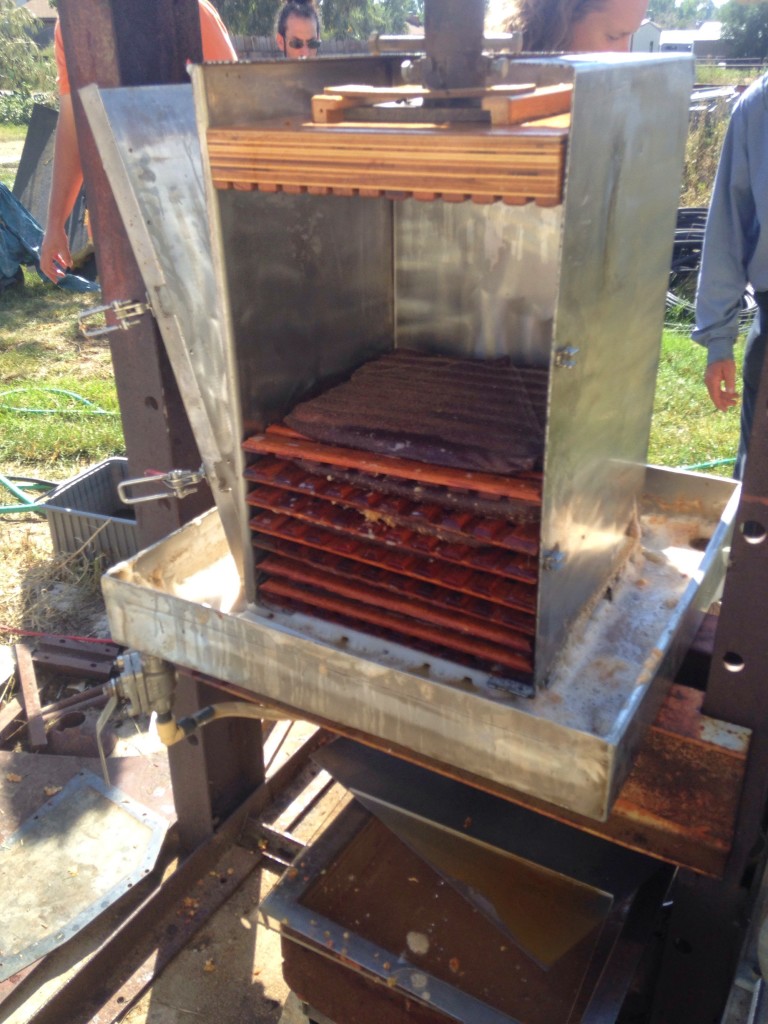

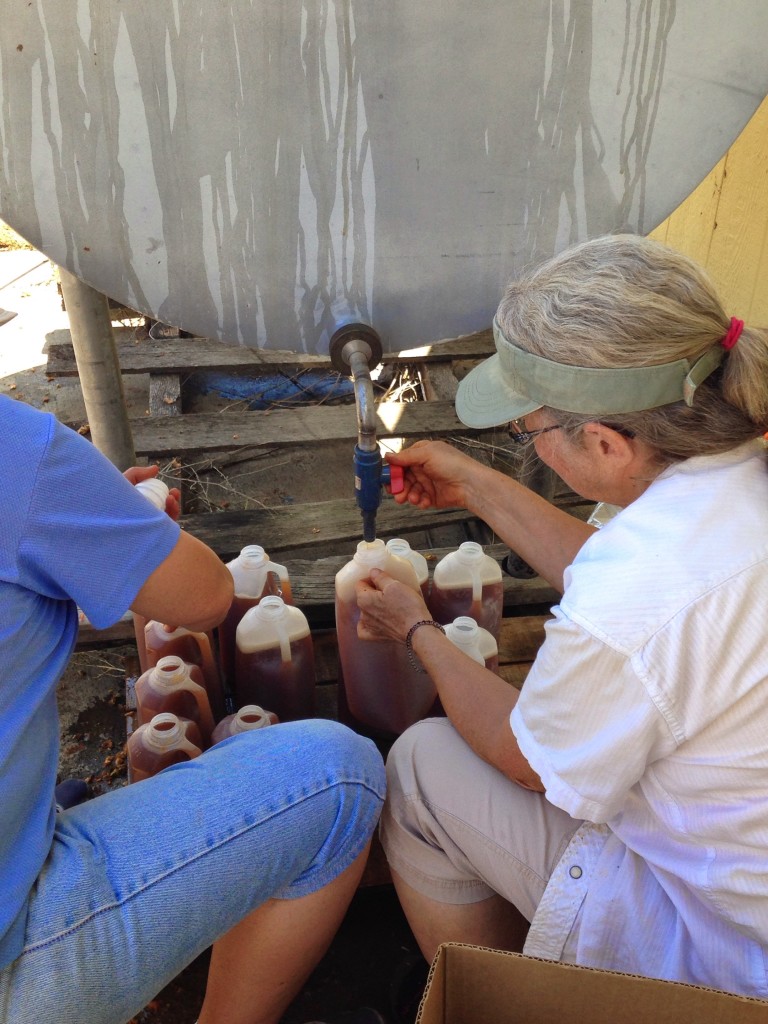
Leave a comment